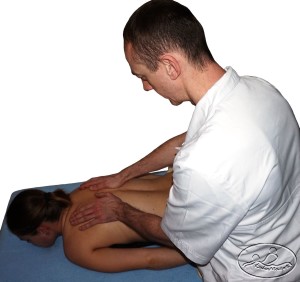About Physiotherapy / Rehabilitation medical
What is Physiotherapy?
Physiotherapy (medical rehabilitation) is a part of modern clinical medicine and is derived from this part of different kinds of treatments physiotherapy (used since ancient times), which received a full scientific foundation and on that basis have been developed. It is used in the prevention, medicine and rehabilitation.
Physiotherapy can be divided into the following sections:
Kinesitherapy,
Physical Therapy,
Massage,
Health resort treatment.
Based on: Straburzyńska-Lupa A., Straburzyński G., “Physiotherapy”, 3rd ed, PZWL, Warsaw 2007, p.5
“It’s a mistake of treatment is to separate the body from the soul.”
Plato
Physiotherapy – methodology of my work and condition of effectiveness:
I assure you that physiotherapy – medical rehabilitation, you will be individually selected and customized to fit your needs and ailments. The optimal choice of manual techniques, therapeutic exercises and physical treatments allows to effectively prevent many diseases. Each individual rehabilitation program is based on diagnostic results (clinical tests and trough palpation techniques), history, presenting the results of medical diagnostics. Having this information it will be easier to find the cause of the dysfunctions and work towards removinq it. This will help with eliminating or alleviating afflictive functional disordes of the body. My goal is to find and heal the cause of the problem, not to solely deal whit its consequences. It is highly recommended to avail of only one professional therapist treatments – this is due to the fact that I can observe the progress and base my following treatments on that assuring appropriate adjustments are made. Having an additional therapist my result in unnecessary strains which are impossible to capture what could be a potential health hazard.
Short History of Physiotherapy:

Physiotherapy “has a long tradition dating back to the distant centuries. The value of health movement knew 3,000 years ago, Chinese and Japanese. Around 2700 BC in China were arranged tournaments health with specially selected breathing exercises. The Greeks various diseases treated gymnastics (…). The Romans, having special cult of the body (…), striving for perfection, practiced rhythmic exercises and resistance. In these exercises needed was another man: a better, more efficient, properly prepared – a teacher. (…) In the history of France is recorded Ambrose Pare ‘( XVI.). Soldiers, who lost a leg Pare ‘gave a wooden sphere and taught how to walk on it. (…) The initiator of rehabilitation in Poland was prof. Ludwik Bierkowski (…). in open in 1837. school of gymnastics, Swimming and Skating taught gymnastics orthopedic for people crippled. He wrote a handbook.” A few words about the possible, the need for and use of gymnastics.”
In addition to physiotherapy since the dawn of time mankind has used a natural physical stimuli like hot springs, wraps and various other peloids. Built various types of baths and saunas, regardless of area of residence.
Based on the: “Rehabilitacja”, pod red. Jerzego Kucha, wyd.1, PZWL, Warszawa, 1989, s.12
“The poor are the city, where there is no doctor!”
The medieval Jewish wisdom
Contraindications for physiotherapy:
Absolute and relative contraindications to particular treatments will be discussed before the surgery or are listed in the description of the procedure massage, therapeutic exercises and physical.
IF YOU HAVE ANY DOUBTS, OR OCCURRING IN THE CASE OF HOME HEALTH PROBLEMS, NEED AND CAN USE PHYSIOTHERAPY, PLEASE FOR CONSULTATION WITH YOUR DOCTOR !!!
Indications for physiotherapy:
All diseases, as to which there are no contraindications, can cure or help their treatment procedures in the field of medical rehabilitation. It is worth noting that skillfully applied physiotherapy effectively complements and sometimes even replaces medication or surgery.
“The doctor treats when money feels. Time heals clown and not just doctors.”
With the wisdom of the seventeenth-century
The impact of physiotherpy on the boby:

Various methods of physiotherapy can affect the body locally or systemically. Depending on the method, we can induce specific changes in the body, triggering / stimulating its Reactions were physiological, leading to more rapid regeneration of damaged tissues and cure their pain relief. If it is not possible to recover lost functions, the role of the physiotherapist is to guide rehabilitation in such a way as to result in a targeted manner to compensate for the lost function of the body.
So, physiotherapy, we can act on, inter alia, the following systems and organs of the body:
• skin tissue;
• circulatory and lymphatic system,
• muscle tissue :,
• joints and the ligament,
• the nervous system.




